More discoveries in Oliver Rackham’s Ancient Woods of South-east Wales. Coed Rhiw’r Ceiliog is on the southern slope of the Garth mountain, just north of Cardiff. Looking from the Pentyrch road,
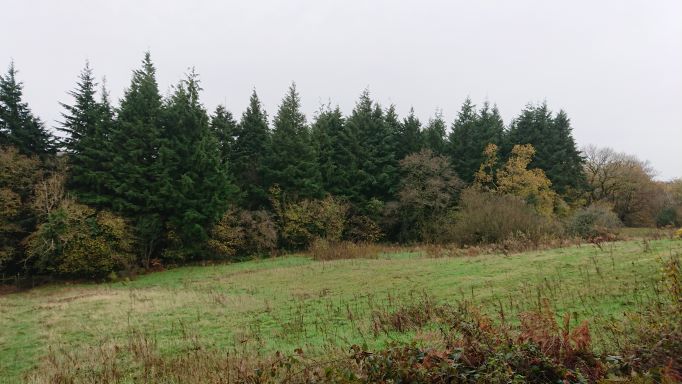
it is now a rather decayed conifer plantation, though with a few large beech trees
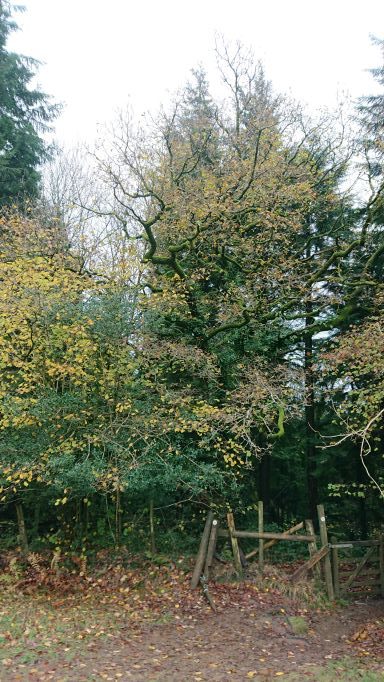
peeking over the edge. Rackham has however identified it as an ancient woodland, complete with boundary bank. There are more large beech trees
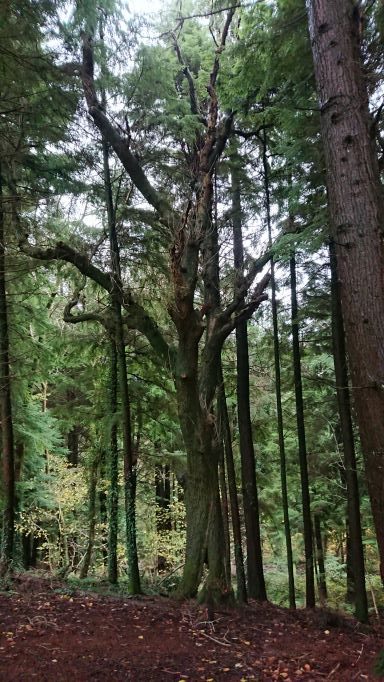
down the slope from the northern entrance. (There is a splendid detailed map in the book.) And yes, the bank is there – and along the northern edge it looks like a bank and ditch.
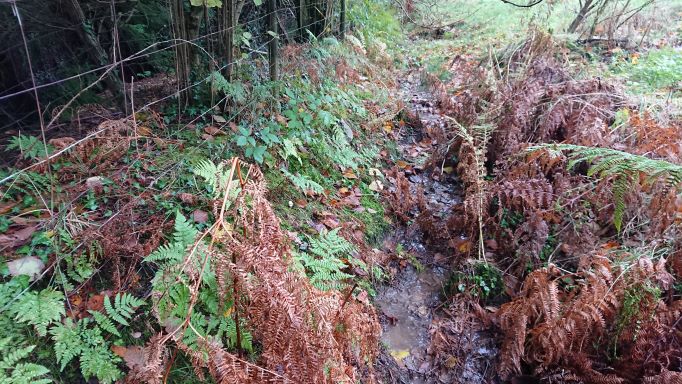
Yes, the ditch has turned into a stream in the recent rain. And yes, I did fall into the stream. But by this stage I was so excited by Rackham’s findings that I plodded on regardless, dripping mud and grateful that my phone is waterproof.
The bank going westward is quite clear, once you know what you are looking at
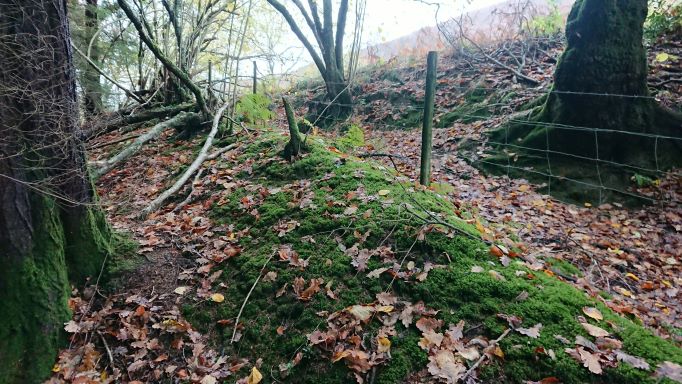
and here is the beech tree which Rackham noted at the north-west corner.
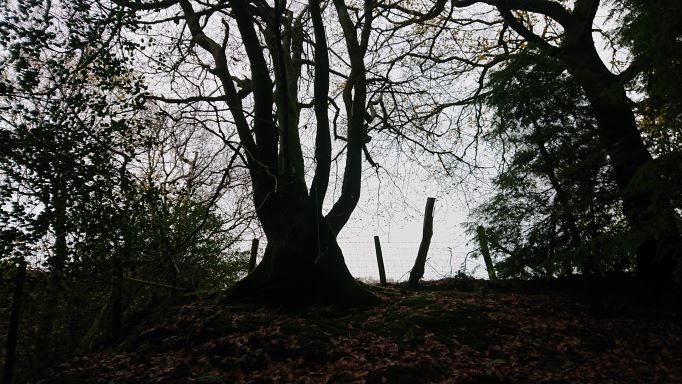
He describes it as a stub – a tree which has been cut off and allowed to regrow. A stub has been cut rather higher than a coppice but not as high as a pollard, and it’s typical of woodland boundary banks.
From here the bank turns south,
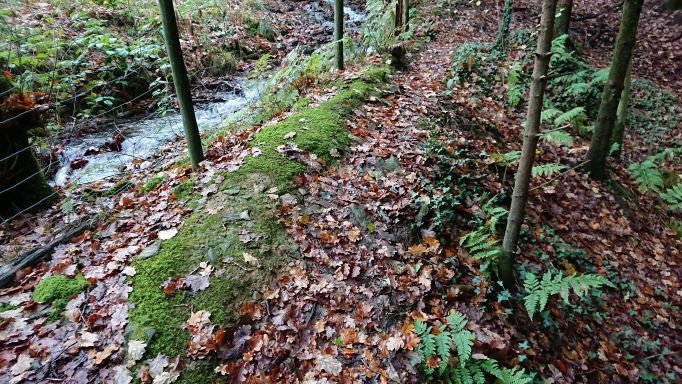
and what may once have been a ditch is now quite definitely a stream. There are a number of bell pits in the wood, early forms of coal mining. The Garth is near the southern edge of the South Wales coal field and the coal seams are fairly near the surface. Bell pits were one of the earliest forms of mining: you dug down to the coal then widened out the hole into a bell shape, got out as much coal as you could and (ideally) got out before the sides collapsed. They were an inefficient method of mining, and by the eighteenth century they had largely been replaced by drift mines and adits. The bell pits in Coed Rhiw’r Ceiliog could be medieval or early modern. This one
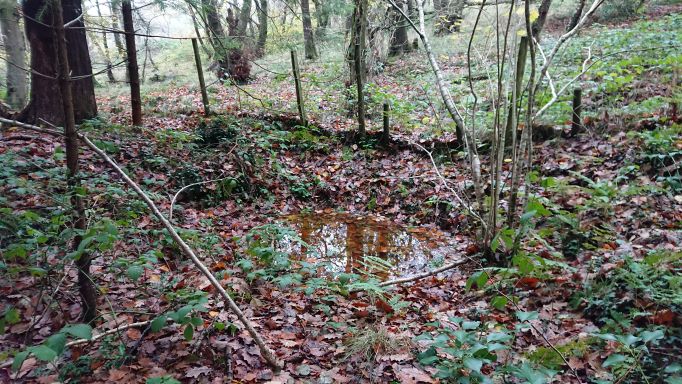
cuts into the boundary bank at OS ref ST 11125 83227 so is clearly later than the bank. Another a little further down
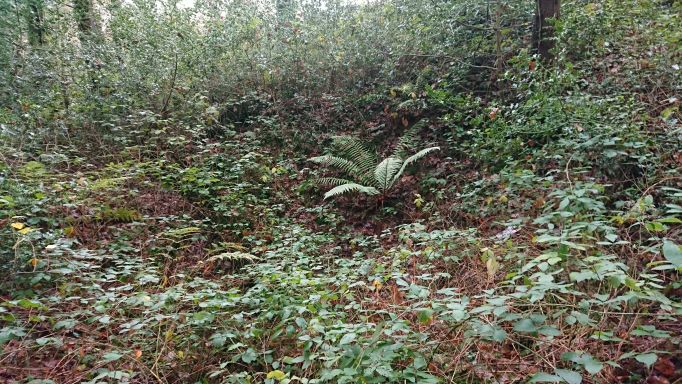
at about ST 11226 83077 would also have encroached on the bank.
There is a lot more to find out – back to the wonderful Places of Wales web site. The 1900 OS map marks buildings in the middle of the forest and gives the area the name Maesaraul, though the 1840 tithe plan says it’s part of a farm called coedcae (a place name about which Rackham has quite a bit to say). There was also a cottage down at the south-east corner, called Maes-gwyn on the OS map but on the tithe plan described as part of Coedcae.
Rackham was only concerned with the ancient woodland, though he does mention later features like mining and tramways when they affect things like woodland banks.
The bank turns north and runs up to the road at ST 11321 83507.
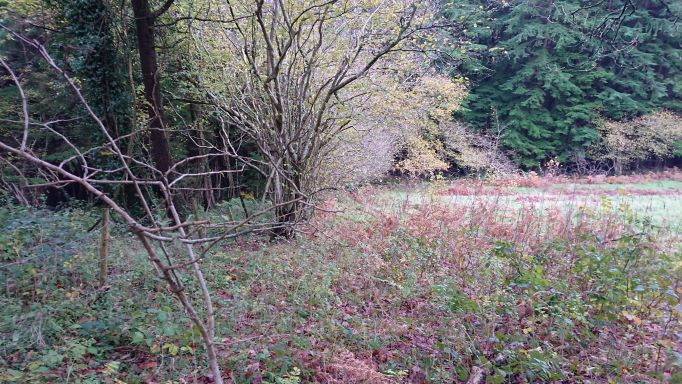
Early maps show settlement at this north-east corner of the wood, now ruined or lost. This
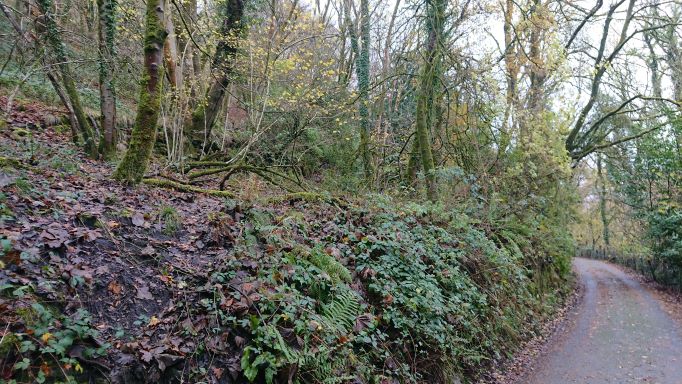
must have been a cottage, but it can now only be identified by the shrubs which would once have been the garden hedge, lonicera nitida and privet.
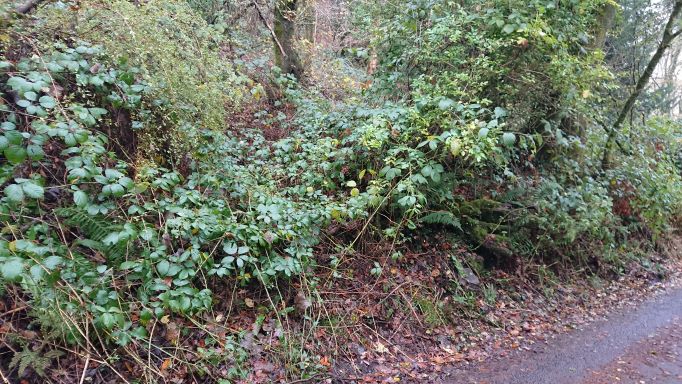
There were once houses all along the road, a pub (the Collier’s Arms), and a bigger house (or possibly a farm) below the road – but it’s difficult to tie these up with the tithe plan. More work needed.


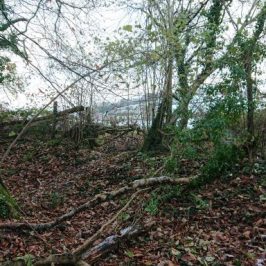

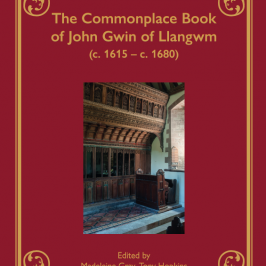
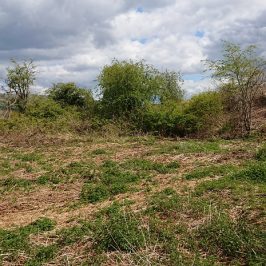
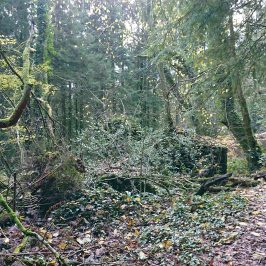
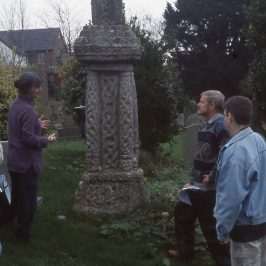
John Owen
Edgar Chappell in his `Historic Melingriffth` has a lot to say about coal mining in Coed Rhiw`r Ceiliog. Norma Proctor in her Lan History Group has also done alot of work on the area,including the lost cottages on the Garth.
Maddy
Thanks, John! I’m trying to find out if I can share Rackham’s plan of the early features in the wood.
Maddy
John, do you have contact details for the Lan History Group?
sian
A few years ago, I found a small intact vinegar bottle up near the row of cottages you mention. On this little piece of found treasure, it says ‘Manor Vinegar Brewery Birmingham’
Maddy
Wonderful!
Are you involved with the Lan group?
We must have another go at the Cefn Carnau ruins this winter. I’m now looking after no. 2 grandson 3 days a week (and I imagine you are equally busy) but we ought to have a go now the undergrowth has died down a bit.
sian
I’m not involved with the Lan Group. There is often mention to The Lan on the Gwealod facebook page. Norma Proctor is on that page if you wanted to connect with her.
Yes I would love to go to Cefn Carnau with you. If you are able to make the Christmas Nature Walk on Dec 7th perhaps we can chat about it then. Meeting 9.30am outside The Lewis! x